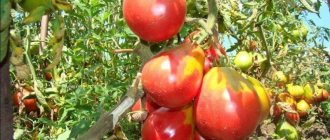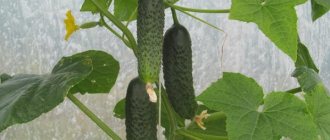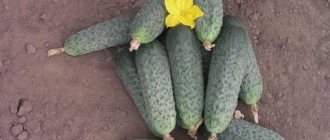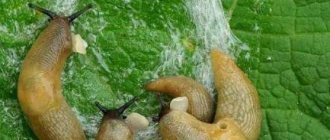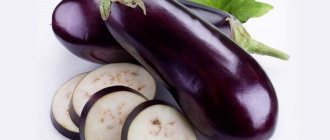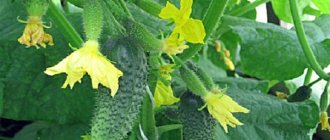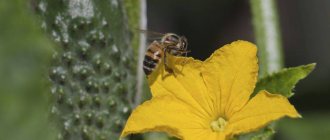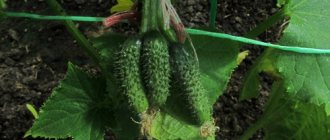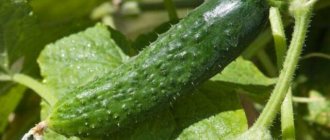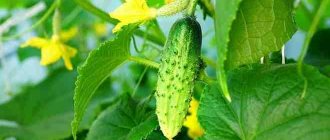Description of the hybrid
Libelle F1 is a first-generation mid-season hybrid bred by breeders from Germany. It is grown mainly in the Central and Northwestern regions of Russia.
Composition and benefits of cucumbers
100 g cucumbers contain:
- water - 90-95 g;
- proteins - 0.6 g;
- fats - 0.1 g;
- carbohydrates - 3.6 g;
- calorie content - 15 kcal.
Cucumbers contain vitamins and microelements (iodine, copper, manganese, phosphorus). These substances have a beneficial effect on the body :
- promote food absorption;
- reduce stomach acidity levels;
- help with kidney and liver diseases, rheumatism and diabetes;
- improve the functioning of the thyroid gland.
Characteristics
The root system of cucumbers is poorly developed and goes shallow into the ground. The bushes are covered with a large number of leaves with a large leaf area. The fruits, which have an elongated shape, reach a length of 10-15 cm and a weight of 0.1-0.15 kg when ripe.
The surface of the fruit is covered with small tubercles and small white spines. They have juicy, crispy and pleasant-tasting flesh without a bitter aftertaste.
Libelle is notable for its high yield . With good care and favorable conditions, up to 4-5 kg (maximum 8-10 kg) of fruit can be collected from one plant per season. When growing in open ground, such a high result is not always achievable.
CUCUMBER LIBELLE F 1 (DESCRIPTION, CHARACTERISTICS)
Growing system
Like all other vegetable crops, the Libelle F1 cucumber, reviews of its care indicate that it loves light, moisture and warmth, has an underdeveloped root system.
But the part that is located above the ground has a relatively large mass. For good growth and proper development, the plant requires the following temperature regime: for air - 25-27, and for soil - 20-22 degrees. The emergence of various kinds of diseases most often begins when a lower level lasts for a relatively long time. In the case when the weather is inclement and the average temperature is ten degrees for a long time, the vegetable crop begins to slow down in development, moreover, in this case the yield that the Libelle F1 cucumber will produce will also be in question.
How to grow your own
Cucumbers can be planted from seeds or pre-grown seedlings . In the Russian climate, to obtain an early harvest, summer residents mainly use seedlings grown on the windowsill.
Landing
To grow seedlings , prepare peat tablets or cups of sufficient volume and substrate .
The latter would be a vegetable soil mixture purchased in a store, or soil from your site that has been calcined and disinfected. Before sowing, planting material is sorted by immersing it in salt water (a tablespoon of salt per glass of warm water). The seeds that float to the top are thrown away, the rest are allowed to dry and planted in pots (if grown through seeds, directly into open ground).
Attention! When unpacking seeds purchased in a store, pay attention to their appearance. The seeds, covered with a colored shell, have already been processed. Before planting, seeds without shells are soaked in a manganese solution or in hot water (+50-55 °C) for 20 minutes to disinfect their surface.
At the turn of April and May, seedlings or seeds can be transplanted into open ground . This is done no earlier than several full-fledged leaves have formed on the plant, and warm weather without night frosts has established outside the window. It is advisable to place the cucumber bed in an unshaded and windproof place.
Before planting, the top layer of soil is loosened, and places for holes 1.5-2 cm deep are marked at a distance of at least 30 cm from each other. For 1 sq. m. beds will accommodate 3-4 plants. Along with the seeds or seedlings, place a little rotted compost in the holes.
Transplanting seedlings is painful for plants , so they are planted together with a lump of earth carefully removed from the pot (if necessary, the size of the holes is expanded). In this sense, planting with peat tablets is preferable.
Common cucumber Libelle F1 (libelle f1)
